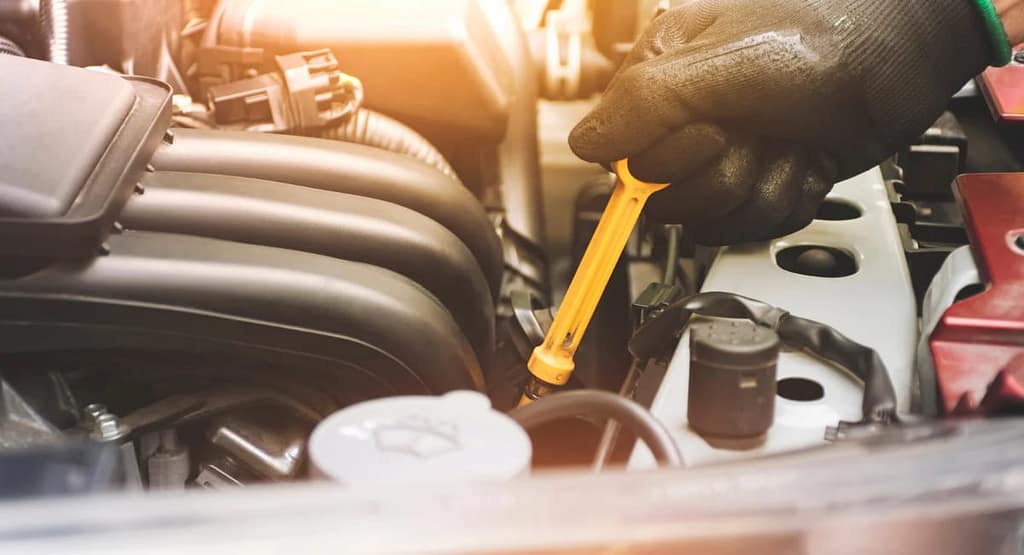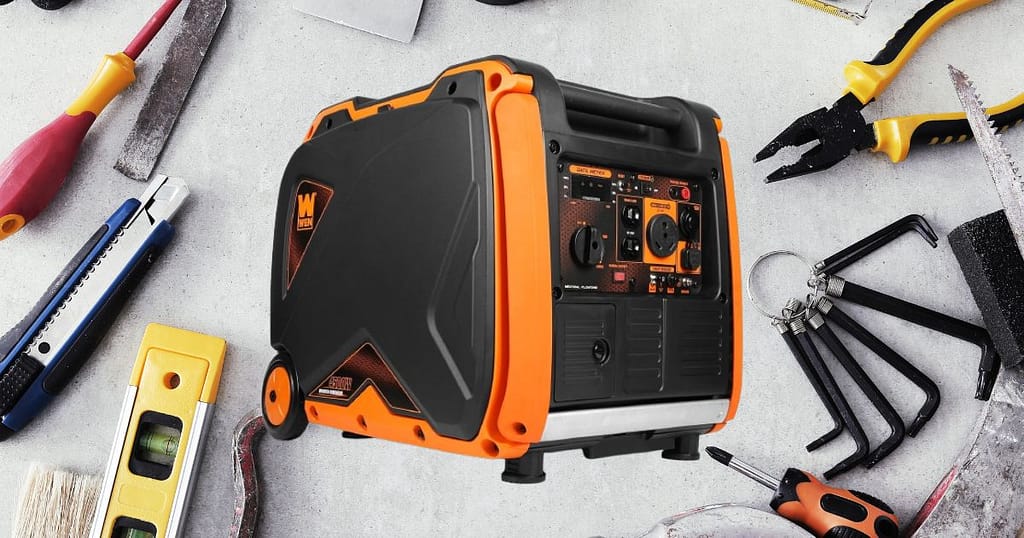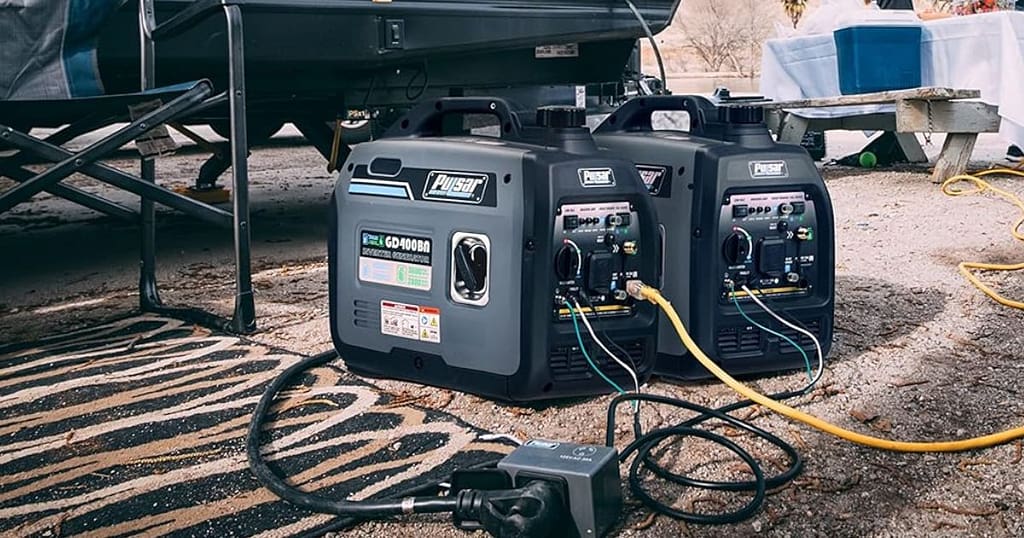
Is it Safe to put oil in a Warm Generator?
You know those portable generators are lifesavers when the power goes out, right? Whether it’s a nasty storm knocking things out or you’re off the grid, they let you keep on keeping on. Only thing is, like any machine, they need some TLC now and then to treat you right.
One thing folks often wonder – is it okay to pour in more oil if the thing is still a little warm? Well wonder no more, because I’m going to break down the dos and don’ts of refilling the oil on a generator that’s not fully cooled yet. By the end, you’ll know how to properly take care of your backup power buddy so it’s ready when you need it. So pull up a seat – let’s talk generators!
Understanding the Basics
Before delving into the specifics, let’s quickly review the basic function of oil in a portable generator. Oil helps the engine by making things smoother and cooler, like a helpful liquid that reduces rubbing and warmth. It also helps to keep the engine components clean and functioning smoothly. Regular oil checks and changes are essential for the generator’s overall health.
Is it Safe to put oil in a Warm Generator?
Dos:
1. Check Oil Levels Regularly:
Keeping tabs on the oil is so important for your portable generator. You definitely don’t want things running dry under the hood, if you know what I mean. Engines need that slick stuff to keep all the moving parts lubricated. Without enough oil circulating, things can get real gritty real fast. Before you know it, you’ve got some serious damage on your hands. All it takes is a quick peek under the cap every time you fill up the gas tank. Takes two seconds but can save you a ton of hassle down the road.
2. Follow the Manufacturer’s Guidelines:
That little booklet the generator comes with? Yeah, don’t lose it. It tells you everything you need to know to keep your machine humming. Like what type of oil to use – can’t go wrong with following what the maker recommends. And it lists out how much you need in there too. Plus it covers all the regular checkups to do. Those maintenance tips are no joke, they really know their stuff. Do what it says and your generator will run smooth for years to come. Just take a few minutes to read through the manual, it’s full of good advice from the source.
3. Use the Right Oil:
When it comes to oil, don’t just grab the first thing you see – you gotta use what your generator likes. Check the owner’s manual to find out exactly what type of lubricant your particular model needs. They’re not all the same under the hood, so putting in the wrong stuff could cause problems down the line. Stick with what the manufacturer recommends and you’ll be keeping your generator happy and healthy.
4. Allow the Generator to Cool Slightly:
It’s super important to use the right lubricant for your generator. What works for one machine might not cut it for another, if you catch my drift. Each model is a little different under the hood. That’s why you gotta check the owner’s manual it came with – it’ll spell out exactly what thickness and type of oil yours needs. Don’t just grab the first jug you see. Take a minute to find the one made specifically for your generator specs. Put the wrong stuff in there and who knows what might start knocking around. Play it safe and go with what the manufacturer intended. The manual’s your buddy in this case.
5. Add Oil Gradually:
No need to rush when adding more oil. Go slow and steady and you’ll fill ‘er up just right. If you dump it in all at once, it’s easy to make a mess or overflow. Take your time, checking the dipstick as you go so you know when to stop. Pour a little, check, pour a little more. Repeat until she’s full and happy. Going gradual prevents mistakes and saves you time cleaning up in the long run. Easy does it is the way to be when dealing with engine lubricant.
Don’ts:
1. Add Oil While the Generator is Hot:
I wouldn’t recommend adding oil to your generator while it’s still hot. That fast shift from scorching to room temp can cause the oil to splatter all over, and nobody wants to get burned. Let it warm down so it’s not gonna bubble over once you open her up. You’ll know it’s ready when you can lay a hand on it for a few seconds without yelping. No need to rush and put yourself in danger. Being a bit patient can make a big difference in this situation.
2. Overfill the Oil:
The deal overfilling the oil in your generator is not a good look. You wanna put in the right amount, not a drop more. Cramming too much lube in there puts unnecessary pressure on all the inner workings. Next thing you know, stuff’s starting to seep where it ain’t supposed to. Just follow what the manual says is the right amount and double-check with the dipstick. It’ll only take a second to make sure you hit the sweet spot. No use courting trouble by overindulging in the oil. Stick to the recipe and you’ll be cooking with gas, er, oil for many miles to come.
3. Neglect Regular Maintenance:
When it comes to your portable generator, neglecting basic maintenance is just asking for trouble down the road. These hard-working machines need a little TLC now and then to keep running smoothly. Something as simple as checking the oil level can tell you if any underlying issues are developing. Changing it on schedule removes dirt and debris that can damage vital engine parts if left alone. Taking 10 minutes to do this every few months is such a small investment to protect a generator that you’ll rely on during storms or blackouts.
Trust me, you don’t want to find out the hard way that it’s out of commission just when you need the backup power most! Keeping up with the maintenance schedule is definitely the way to avoid costly repairs or replacements down the line.
Conclusion
Topping up the oil in a portable generator that’s still a little warm is definitely doable – you just need to exercise some caution. Keeping on top of oil levels, using the type specified by the manufacturer, and following their guidelines are all important for keeping things running smoothly. Even if it’s best to let it fully cool down first, sometimes you just can’t wait that long.
As long as you’re careful and don’t go filling the crankcase while it’s still piping hot, you should be good to go. Sticking to these tips will help your portable generator last for years, always ready to power up when those unpredictable outages strike. With a little regular maintenance like checking the oil, you’ll keep yourself prepared no matter what kind of weather Mother Nature throws your way.




